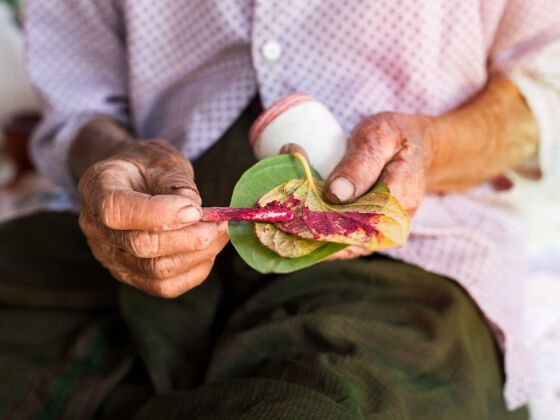1. Betel nut
Produced: India, Nepal, Bangladesh, Sri Lanka
Consumed: Throughout Asia, parts of East Africa
Active ingredients: Alkaloid arecoline, calcium hydroxide, allylbenzene compounds, nicotine
Effects: Stimulant, appetite suppressant, antiseptic, euphoria
Health effects: Areca nut used with tobacco is carcinogenic and can increase the chewer’s risk of cancer. Regular users frequently have red stains on their teeth, mouth, and gums.
Legality: Legal
